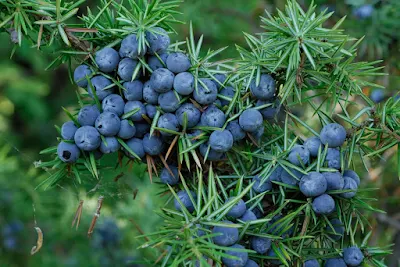
Winter Recipes from the Collective
1.
Each year when winter came, the old men entered
the woods to gather the moss that grew
on the north side of certain junipers.
It was slow work, taking many days, though these
were short days because the light was waning,
and when their packs were full, painfully
they made their way home, moss being heavy to carry.
The wives fermented these mosses, a time-consuming project
especially for people so old
they had been born in another century.
But they had patience, these elderly men and women,
such as you and I can hardly imagine,
and when the moss was cured, it was with wild mustards and sturdy herbs
packed between the halves of ciabattine, and weighted like pan bagnat,
after which the thing was done: an "invigorating winter sandwich"
it was called, but no one said
it was good to eat; it was what you ate
when there was nothing else, like matzoh in the desert, which
our parents called the bread of affliction— Some years
an old man would not return from the woods, and then his wife would need
a new life, as a nurse's helper, or to supervise
the young people who did the heavy work, or to sell
the sandwiches in the open market as the snow fell, wrapped
in wax paper— The book contains
only recipes for winter, when life is hard. In spring,
anyone can make a fine meal.
RECETAS INVERNALES DE LA COMUNIDAD
I
Cada año al llegar el invierno los viejos se adentraban
en los bosques para recoger el musgo que crecía
en el lado norte de algunos enebros.
Era una labor lenta, que requería varios días, aunque estos
fueran días cortos porque la luz era cada vez más escasa,
y cuando tenían las mochilas llenas, retomaban
penosamente el camino de regreso, con la pesada carga del musgo.
Las mujeres fermentaban este musgo, una tarea laboriosa,
especialmente para gente tan anciana
como para haber nacido en otro siglo.
Pero tenían paciencia, estos ancianos y ancianas,
una que tú y yo apenas logramos imaginar,
y cuando el musgo ya estaba curado, se metía acompañado de mostazas silvestres
y recias hierbas en una chapata cortada en dos, y se aplastaba como un pan bagnat,
tras lo cual estaba listo: un “revitalizador bocadillo invernal”
lo llamaban, pero nadie decía
que estuviera rico; era lo que comías
cuando no había nada más, como el pan ácimo en el desierto, que
nuestros padres llamaban el pan de la aflicción... Algunos años
un anciano no regresaba del bosque, y entonces su esposa necesitaba
una nueva vida, como auxiliar de enfermería, o supervisando
a los jóvenes que hacían el trabajo pesado, o vendiendo
los bocadillos en el mercado al aire libre mientras caía la nieve, envueltos
en papel encerado... El libro contiene
solo recetas para el invierno, cuando la vida es dura. En primavera
cualquiera es capaz de preparar un buen plato.

No hay comentarios:
Publicar un comentario